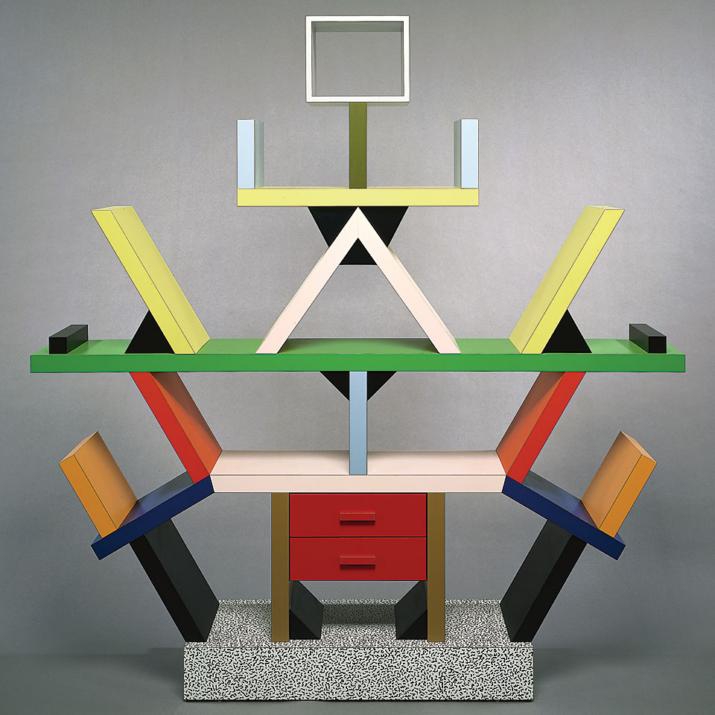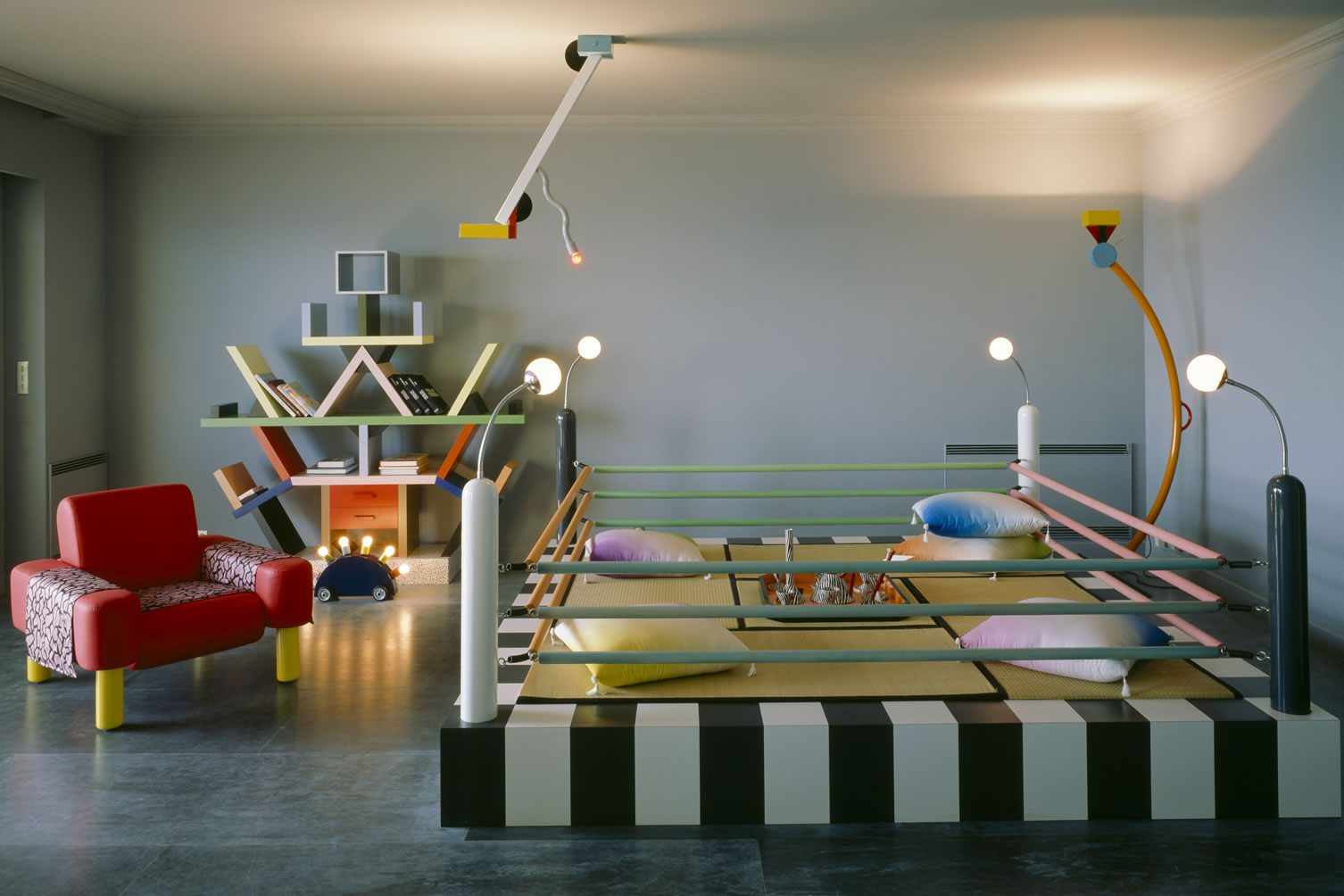I own a book called “The look of the century” by Michael Tambini which is about the “changing progression in clothing, transportation, product, and architectural design during the twentieth century, providing information on the most important art movements, key designers, and interesting developments and innovations from each decade”. What I loved so much about it when I was younger was the fact that it was practically a picture book filled with unusual objects that amazed me.
My sister and I had even made a game for the book where we would flip a page as quickly as possible and point at the object that we would want in our imaginary home. The only rule was you couldn’t choose the same one. At the time, I obviously had no notion of any design movements, let alone post-modernism but looking back now, there was 1 piece of furniture that marked me. Out of every single thing in that massive book, it was my favorite. I loved the colors, the unusual shape but most of all the utility of it.
I now come to find out it was The Spacestor (fig.1) by Ettore Sottsass. A masterful post-modern shelf made by one of the most important figures of the movement. This recent discovery was a full-circle moment for me. Something I loved so much as a child was coming back to me through my studies.

Italy was the capital of the post-modern movement in Europe, and Sottsass was leading it. Post-modern was fresh and avant-garde. It was loud, messy, confrontational and contrasting. It was everything that modernism was not. The Memphis group, founded by Sottsass, conducted some of the most memorable designs, that some even considered the group to be in a movement of their own.
However, their style was commercially rejected. Europe was not yet over the minimalist and timeless look of modernism. Post-modernism was too drastic and different for commercial use. However, with time, what was once only popular in the Northern parts of Italy, had spread across Europe and had become approved by design enthusiasts and the general public. Figures like such as Karl Lagerfeld (fig.2) and David Bowie had both created huge personal collections of furniture from the Memphis Group.

Post-modernism became a sensation. With their design of the Bacterio Print (fig.3), the Memphis group became the visual symbol of the ’80s. It could be found everywhere. MTV, Baskin Robbins, and Taco Bell. However, it’s growing popularity became its demise. With its designs becoming more commercialized and main-stream, post-modernism was no longer avant-garde. It had lost its spunk and the philosophy surrounding its roots were no longer represented. By the 1990s, Post-Modern was seen as gimmicky and bad taste and was once again rejected.

Some say that there will be a comeback, with more designers looking to the past for inspiration, and the present popularity of the big bold graphic look, it wouldn’t surprise me to see post-modernism come back to light.
Work Cited.
https://spacestor.com/insights/postmodernism-design/
https://spacestor.com/insights/postmodernism-design/
https://www.britannica.com/topic/postmodernism-philosophy
https://www.newhomesource.com/learn/postmodern-design/
Images
Figure. 1
https://spacestor.com/media/scaled_images/insights/2017/07/Carlton-room-divider_big.jpg
Figure 2
https://www.we-heart.com/upload-images/karllagerfeldmemphis1@2x.jpg
Figure 3
https://i.pinimg.com/originals/9e/bd/62/9ebd62735a9a85bbf1fa99d5ba562858.jpg
